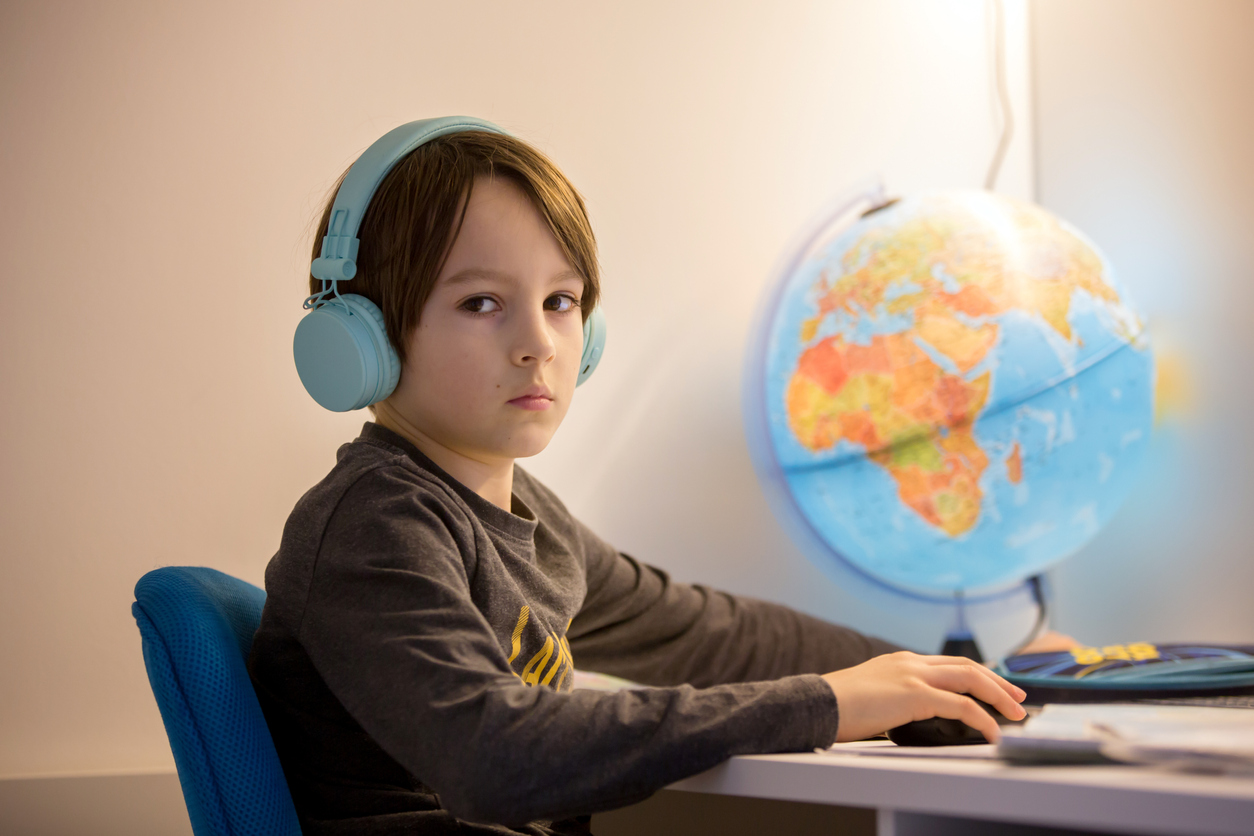We’re in the midst of one of the greatest youth crises in history. Suicide rates are up. Way up. So is depression, anxiety, sexual confusion, and desperation. All of this was completely predictable when so many school systems decided to close their doors and leave children to the mercy of the Internet. But one system has bucked the trend. Here’s our story.
Darkness Descends
Their excitement was palpable. The middle school honors choir was on a grand adventure to Illinois to participate in an elite program for outstanding choirs across the nation. The children sat with their friends and giggled about the events of the day as parents on the bus snoozed contentedly.
The students entered the vast cathedral where they would sing. Their hopes continued to rise in anticipation of their performance. Their voices swelled, then paused, as a grave announcement was made. Faces fell, and disappointed sighs filled the hallowed halls — their long-awaited trip, having just begun, had been abruptly canceled. The cause of the cancellation? The novel coronavirus pandemic. The governor had closed the schools, and the students had to return home for two weeks of remote school.
At that moment their hopes were dashed. And that was just the start.
Within weeks, the things they loved were taken away. Their friends, their performances, their sports, their playgrounds, their routine, their church, their extended family, their entire life. Everything that made them feel safe and secure.
Day after day, week after week, month after month, the news was bad — and worsening. There was no hope of this ending, no vaccination, no safe place. They could not go out.
The hospitals were filling up, the death toll rising. In New York City maintenance crews still had to turn up to work in the shuttered public schools — why? To build coffins in the empty gyms so the city could keep up with the surging demand because of COVID-19 fatalities.1

iStock photography
Kids in Crises
It’s no surprise that in 2020 emergency department visits for suspected suicide attempts among adolescents jumped 31 percent (51 percent among girls aged 12-17) compared with 2019.2
In addition, the American Academy of Pediatrics, the American Academy of Child and Adolescent Psychiatry, and Children’s Hospital stated that the pandemic-related decline in child and adolescent mental health had become a national emergency.3
As the long, lonely summer of 2020 came to an end, 74 percent of the 100 largest school districts in the country started the year with remote-only instruction models, affecting more than 9 million students.4 A team of researchers at Stanford University crunched the numbers and found that the average student had lost a third of a year to a full year’s worth of learning in reading, and about three-quarters of a year to more than a year in math since schools closed in March - December 2020.5
“Kids are going feral,” said Macke Raymond, director of the Center for Research on Education Outcomes at Stanford University. “Thousands of them are unaccounted for, with no contact since schools have closed.”
Adventist Education’s Alternate Path
What did we do in Adventist education? We looked at the data and the implications of continuing remote schooling, and our dedicated Adventist teachers and administrators knew that students needed to be in school, in person. For the fall of 2020, every school that was able to open for in-person instruction did.
Our teams of dedicated Adventist professional educators erected outdoor classrooms, started forest schools, put safety procedures in place, modified everything from drinking fountains to classrooms, set up cameras and screens for hybrid learning for families that did not feel comfortable sending their children to in-person school, and spent hours planning and learning new ways of delivering instruction. Our teachers spent countless hours making school safe and instruction exciting for our children.
The rising rates in the mental health crisis, however, did not make us immune.

iStock photography
The American Academy of Child and Adolescent Psychiatry reports that children aged 8-12 spend an average of four to six hours a day online and teenagers are online up to nine hours a day. The report goes on to outline research that shows our children are exposed online to violence, risk-taking behaviors, sexual content, negative stereotypes, substance abuse, cyberbullies, predators, negative advertising, and misleading and inaccurate information.6 We are in the greatest war for the hearts and minds of our children. Their physical, mental, and spiritual health is at stake.
Providentially, just as the need became so acute, two years of development came to fruition as we launched the Adventist education mental health toolkit during the pandemic. With resources to support our teachers and students in understanding the mental health epidemic and how to get professional support. Our goal was and is to provide hope in Adventist education.7
Hope for the present — providing a safe and loving Christian school environment; Hope for the future — an engaging, experiential, exciting academic program that sets the stage for success in their chosen career; Hope for eternity — a redemptive, loving, Christ-centered education that points our students to Jesus and the hope of eternal life.
The Bible talks a lot about hope. At this moment one text stands out as important: “Rejoice in hope, be patient in tribulation, be constant in prayer” (Rom. 12:12, ESV).8 So let’s meet the needs of our children; let’s give them hope for the present, future, and, most important, for eternity.
We Can Stand With Adventist Families
We want to partner with you, your church, and your community to make a difference in the lives of children. Adventist schools have among the lowest private school tuition rates. Still, many families can’t afford even the modest fees that Adventist schools need to survive.
If you want to give a child a chance for hope in this life, and for eternity, why not contact your local Adventist school or your conference and contribute to their worthy student fund to ensure every Adventist family can give their children the very best Christian education.
1 E. Shapiro, When Covid Raged in New York, These People Helped Keep the Schools Running (June 2, 2021),https://www.nytimes.com/2021/06/02/world/when-covid-raged-in-new-york-these-people-helped-keep-the-schools-running.html.
2 E. Yard and Associates, Emergency Department Visits for Suspected Suicide Attempts (June 11, 2021), https://www.cdc.gov/mmwr/volumes/70/wr/mm7024e1.htm.
3American Academy of Pediatrics, A declaration From the American Academy of Pediatrics, American Academy of Child and Adolescent Psychiatry, and Children’s Hospital Association (Oct. 19, 2021), https://www.aap.org/en/advocacy/child-and-adolescent-healthy-mental-development/aap-aacap-cha-declaration-of-a-national-emergency-in-child-and-adolescent-mental-health/.
4Staff, A Year of COVID-19. What It Looked Like for Schools (Mar. 4, 2021),
https://www.edweek.org/leadership/a-year-of-covid-19-what-it-looked-like-for-schools/2021/03.
5E. Richards, Students Are Falling Behind in Online School. Where’s the COVID-19 “Disaster Plan” to Catch Them Up? (Dec. 17, 2020),
https://www.usatoday.com/in-depth/news/education/2020/12/13/covid-online-school-tutoring-plan/6334907002/.
6 American Academy of Child and Adolescent Psychiatry, “Screen Time and Children,” https://www.aacap.org/AACAP/Families_and_Youth/Facts_for_Families/FFF-Guide/Children-And-Watching-TV-054.aspx
7 https://mentalhealth.adventisteducation.org.
8 Scripture quotations credited to ESV are from The Holy Bible, English Standard Version, copyright © 2001 by Crossway Bibles, a division of Good News Publishers.
— Leisa Morton-Standish serves as an associate director for Adventist Education for the North American Division.
Original source can be found here.





 Alerts Sign-up
Alerts Sign-up